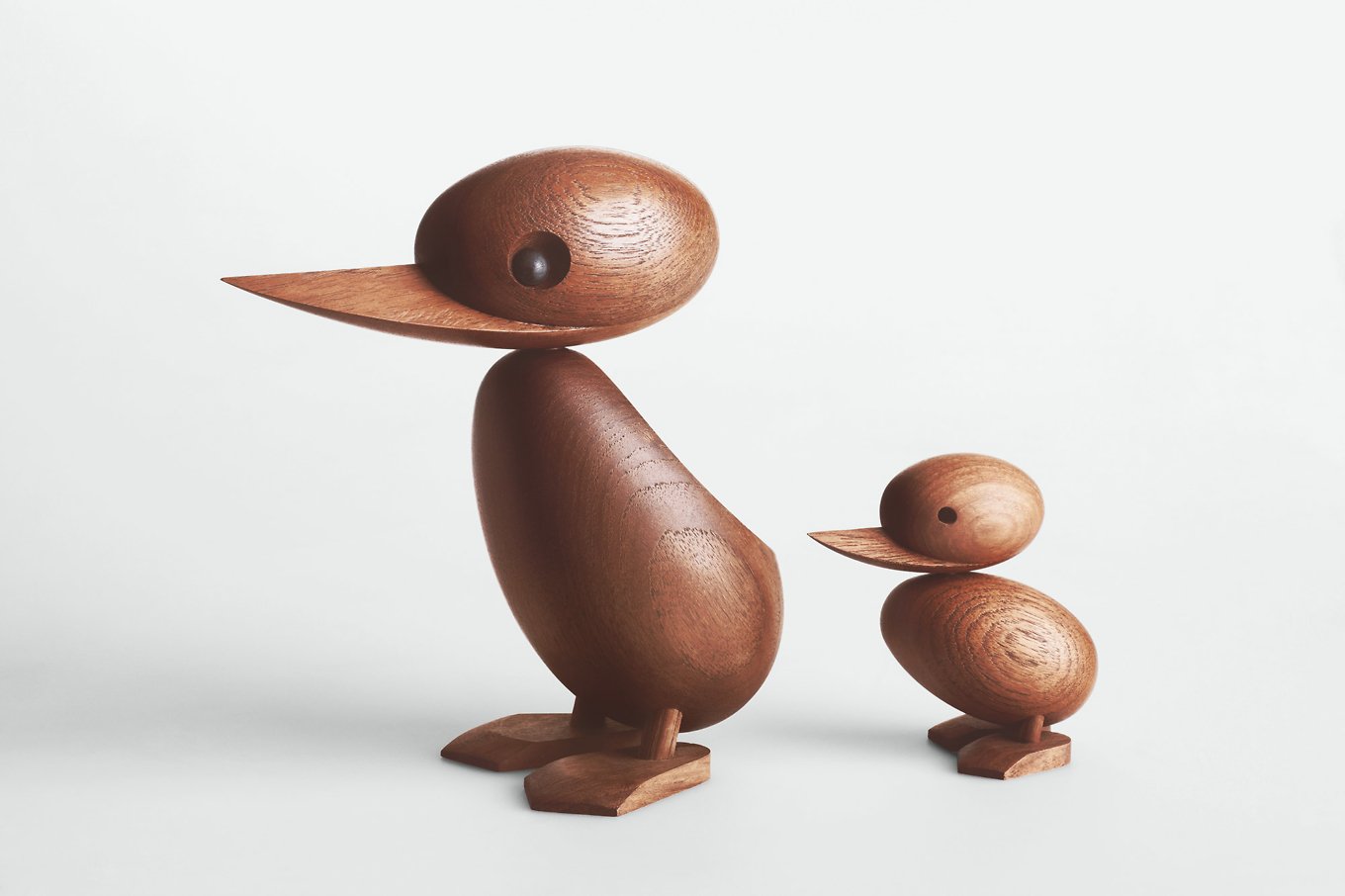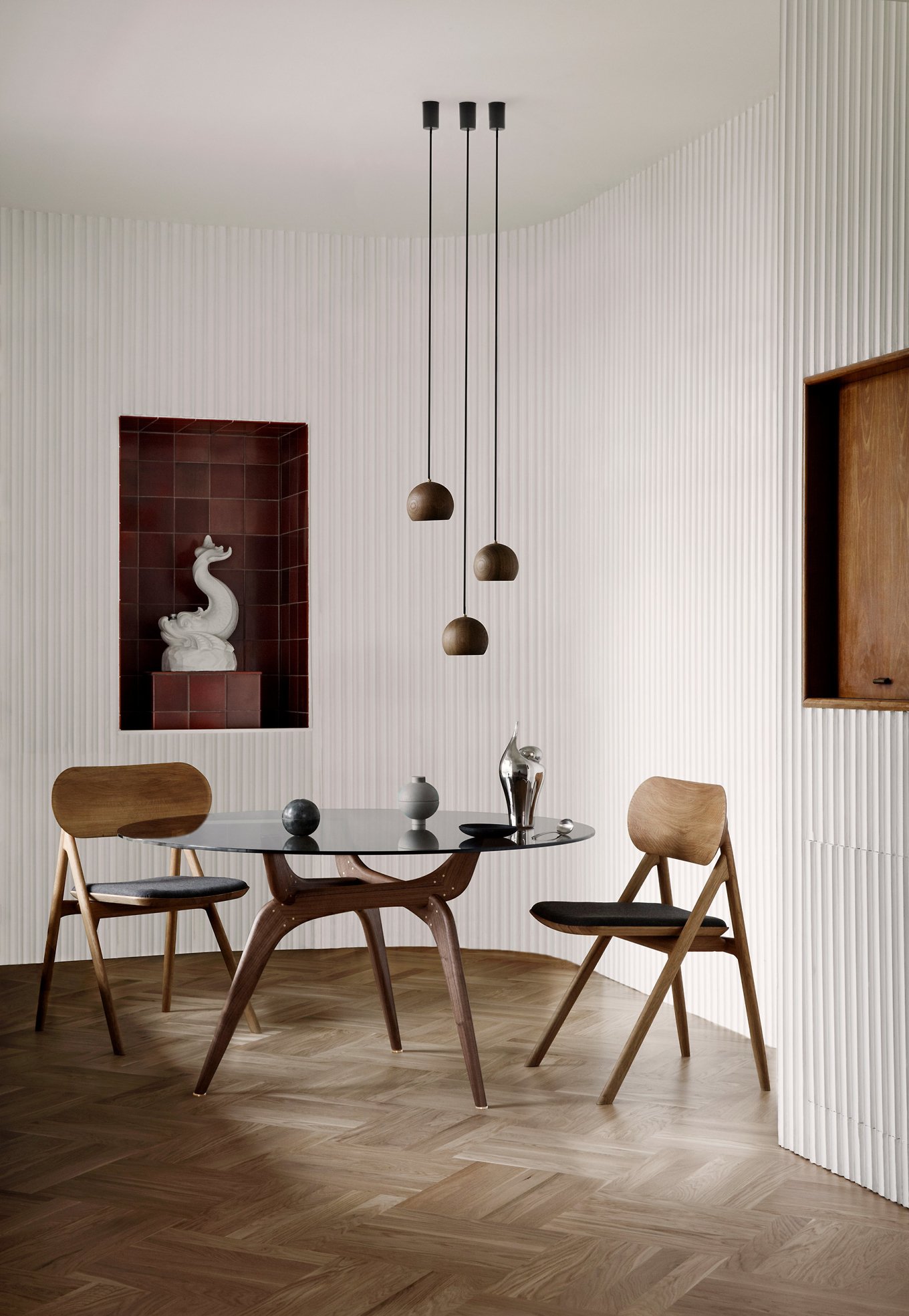If you have never heard of Hans Bølling, he is a much admired old school Danish craftsman and designer. Indeed, he is one of the last remaining midcentury design masters (and long may he continue to be here). Mr. Bølling is a veritable gentleman and has that wonderful air of a grandfatherly figure (he will celebrate his 86th birthday this year). Hans is a good-humoured soul with a gracious manner and a glint of mischief in his eyes. Forever brimming with ideas and taking pleasure in his work, Hans finds sanctuary in his Charlottenlund-based atelier (located north of Copenhagen); it’s one of his favorite places.
Schooled in architecture, Hans Bølling has always adopted a hands-on approach to his craft, creating designs imbued with passion and free of any prevailing trends. His architectural commissions included town halls and private residences. Today, Hans is known for his quirky wooden figures: these winsome characters have found an entirely new audience with the help of Danish venture Architectmade. Revived classic designs include: Duck and Duckling (inspired by the famous incident when a family of ducks stopped traffic as they crossed a busy road in Copenhagen); Optimist and Pessimist (whose respective temperaments were inspired by two of Hans’ colleagues); and Oscar the dog, with movable body parts that emulate the gestures of a real-life dog.
Moreover, as a furniture designer, Hans’ 1963 Tray Table is a Danish design classic and a wonderful example of organic modernism. Handsome, functional and enduring, the Bølling Tray Table is made in Denmark by Brdr. Krüger. The fifth-generation family-owned Danish manufacturer recently worked again with Hans to realise his TRIIIO Table (in three variants), from a sketch and prototype Hans made in 1958.
Gessato gets behind the design with Hans Bølling.
Describe yourself in three words.
(After a long pause…) I’m thankful for life, happiness and playfulness. It’s a poem I wrote for my wife Søs. That was a bit more than three words.
You have engaged in design and architecture for most of your life. How do you sustain a passion for what you do?
See, I have always engaged in playing. I’ve performed puppet shows, made small horse carriages and cut out wooden figures. I attended the School of Arts and Crafts in Copenhagen [known today as the Royal Danish Academy of Fine Arts, School of Design], where we drew patterns and I was drawing commercials [Hans had at one point considered a career in advertising].
All of my friends left school and I then attended the commercial artist courses. I found they weren’t for me and as an alternative, I took part in the textile printing courses. These courses were attended by just thirteen girls—very enticing. But, I was drafted and it was then that I met Søs. Everything I have created since that point is a testament to my love for Søs. I’ve created all of these things [his many varied designs] as gifts for her.
You have a wonderful old-fashioned approach to design and craftsmanship…
‘Old-fashioned!?’ Hans interjects…
Yes, meaning you are able to be both designer and craftsman. You design and you create.
Yes, I make the models [of various furniture pieces and characters] myself. I have always done so. Even the new Discus Birds, I have turned myself [Hans’ colourful wooden Discus Birds for ARCHITECTMADE are shaped as antique Greek discuses].
What is your view of today’s Danish generation of craftspeople, designers and architects?
I have no idea! But every time my daughter Anne Mette sees me cutting out models, to make a chair for example, she says: ‘Dad, that is so much easier to do on the computer.’ And I respond: ‘But I need my knives, rulers and tools.’ As I said, I have no idea about the way in which youngsters do it nowadays. But it has something to do with computers, of that I am certain. One of our younger friends is an architect too and I don’t think he owns a pencil.
You have a delightful collection of wooden toys and figures. Do you have a favorite or a soft spot for one in particular?
(After a long pause…) I am going to say the Duck and Duckling, or at least I think so. I made the first models by hand as a gift for Søs. I have pictures of them and they are so quaint.
Thank you to Daniel Gercke at ARCHITECTMADE for arranging this interview.







